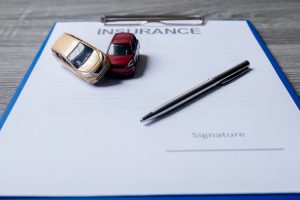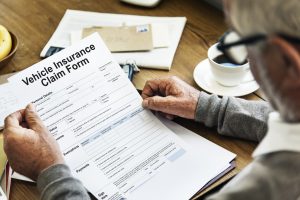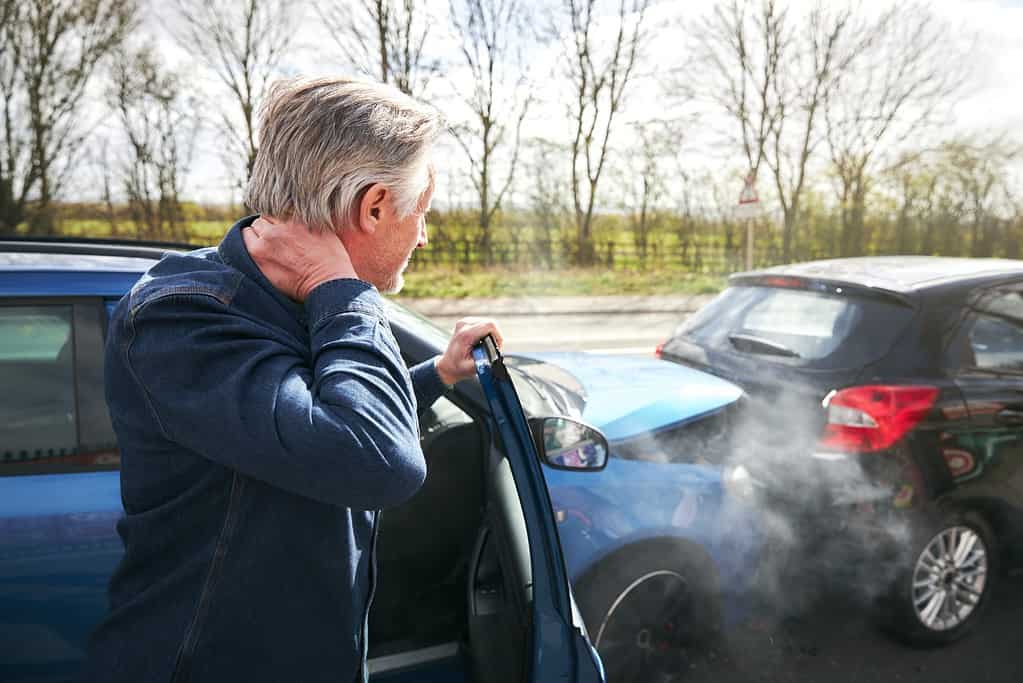According to the National Highway Transport Safety Administration, more than six million motor vehicle accidents happen annually in the United States. More than a third of these crashes result in injury.
It can be hard to think clearly in the moments after the accident. What do you need to do to protect yourself, passengers and other parties involved in the accident? Who will be responsible for your damages?
Since emotions and trauma associated with motor vehicle accidents can be high, many drivers tend to make costly mistakes that end up limiting their right to get compensation from insurance providers.
So, what are you supposed to do when you are involved in an accident to protect your rights? Our comprehensive guide outlines what to do following a car accident to protect your rights.
1. Stop the Car
The first and most crucial thing you must do when you are involved in a car accident is to stop your car since the law requires you to do so. If you fail to stop, you could be accused of a hit-and-run which carries significant punishment.
You don’t necessarily have to push your brakes and stop instantly. If it is unsafe to stop your car immediately, find the nearest refuge area and stop there. This could be a side street away from the busy main road or a motorway.
It is also important to remain calm and avoid unnecessary panic. You must maintain a cool head to deal with the car accident and its aftermath.
2. Check If Anyone Has Been Injured
Once you have stopped in a safe location, the next thing you need to do is ensure the safety of everyone involved. Exit your car carefully and turn on the hazard lights.
If the accident is more than a minor accident and you or someone else is injured, call 911 to get an ambulance to the nearest hospital. But it is good to stay at the scene until a police officer arrives unless you are badly injured.

Call the police immediately, even if you think you have been involved in a minor accident. Remember that you will want the police report should you file a claim for compensation.
It is highly recommended you call the non-emergency police hotline numbers if the accident is only minor.
If you have flares, set them up around the accident scene to alert other motorists that you have been involved in an incident, and they should be careful.
3. Talking to the Other Driver
If everyone involved in the accident is safe, feel free to speak to the other driver. Stay calm, and don’t let anger guide your conversation.
If there is any sign road rage may have played a role in causing the accident, be extra cautious when talking to the other party. You must be careful at this point since you don’t know how the other party may react to your approach.
While it is okay to engage in small talk while waiting for the police to arrive at the scene, avoid making admissions or apologizing to the other party even if you think you are at fault. Don’t blame the accident on the other driver as well, even if you think they are at fault.
In fact, it is best to avoid discussing who is at fault at the accident scene. That is for the police officer and insurance companies to determine.
Also, resist discussing any injuries you may have suffered. You may not always know the full extent of the damage. If you are wondering how long after a car accident injuries appear, the answer can be hours, days, weeks, or even months.
If the other party asks you whether you are injured or not, let them know that you will visit a doctor to find out. Even in a fender bender, it can be several days before injuries manifest fully.
When talking to the other party, stick to facts or a casual talk. Don’t discuss who was at fault or how much insurance coverage you have.
4. Assess the Damage to Both Cars
If you are not injured and can assess the damage to the cars, be sure to do that. Use your smartphone to take clear pictures showing the exact position of each car if they have not been moved away from the accident scene.

If you can’t take pictures of the vehicles, consider drawing a sketch diagram indicating how the accident happened while everything is still fresh in your mind.
5. Collect the Right Information
By this point, you have taken several steps to secure yourself and your passengers. Now is the time to collect crucial information that will aid fair compensation. You must do everything possible to keep your documents and evidence in order.
Exchange critical information, including proof of insurance, car registration, name, and phone number with the other driver. However, you need to be careful and ensure you only stick to exchanging insurance and contact information only.
That prevents you from saying anything that can be used against you later. Generally, you should collect the following information for insurance claims:
- Name and contact information of the other driver
- Insurance company and policy number of the other driver
- Their driver’s license and license plate number
- The exact location of the accident
- Type, color, and model of vehicle
Take clear pictures of any damage to both cars, talk to eyewitnesses, and note down everything you remember about what happened. You can even proceed to record audio or video details.
Take pictures from multiple angles and give the picture a sense of scale. For instance, if you are taking photographs of a dent on your bumper, you can use something like a coin or key to give a sense of scale.
The pictures must also be taken from more than one distance if possible and at least ten feet away from the car, capturing any other thing you might have collided with. Move towards the point of collision, gradually capturing more photos as you come closer.
You should also take pictures of the surroundings, your car’s interior, and anything that will help tell your story.
6. File an Accident Report
Although the police may not always come to the scene of an accident, it is essential to call them in as soon as possible and file a report. The police will take statements from both parties and any witnesses.
The accident report will also have valuable information that can help your insurance company process your claim faster.
In some states, you are required by law to file an accident report if there is significant damage or injuries. Failing to do so can lead to heavy penalties.

Even if the police don’t come to the scene of the accident, visit your local police station, and file an accident report as soon as possible.
After you have filed an accident report, get a copy for your insurance company. The report will have all the necessary information about the other driver and any traffic citations that might have been issued.
The police report can also be useful in court if your case goes to trial.
7. Call a Tow Truck If Needed
Depending on how much damage your vehicle has sustained, it may need to be towed to an auto repair shop. If you have motor club memberships, it will most likely offer roadside assistance coverage, including towing.
If your vehicle needs to be towed, ask the tow truck driver to take it to an auto body shop you trust. If possible, get estimates from a few different shops before authorizing repairs.
Some insurance companies have lists of preferred auto body shops that they work with, but you are not required to use them. The police may also call a tow truck if your vehicle is blocking traffic or is not safe to drive.
If your vehicle needs to be towed, the police will have it taken to a nearby impound lot. You will have to pay a fee to get your vehicle released.
8. Determine What Your Car Insurance Covers
The first step in filing an insurance claim is to find out what type of coverage you have. Most states require drivers to have liability insurance, which pays for damage and injuries caused by an at-fault driver.
If you only have liability insurance and you were at fault for the accident, your own insurance company will not pay for any damage to your vehicle. You will have to pay for the repairs out of your own pocket.

If you have collision insurance, your insurance company will pay for damage to your vehicle, up to your policy limit, regardless of who was at fault for the accident.
Comprehensive insurance covers damage caused by events other than collisions, such as theft, vandalism, or weather.
If you have collision and comprehensive coverage, your insurance company will pay for damage to your vehicle, up to your policy limit, regardless of who was at fault for the accident.
9. Call Your Insurance Company
While it may be tempting to negotiate a settlement deal with the other driver to avoid making an insurance claim, failing to notify your insurance provider after a car accident can leave you in a tricky situation.
If you negotiate with the other driver without notifying your insurance provider and the other driver later files a claim with their own insurer, your insurance company may refuse to pay for any damage to your vehicle.
This is because you failed to follow the terms of your insurance policy by notifying them of the accident.
Your insurance company will also have its own investigators who will look into the accident and determine who was at fault.
If you try to negotiate with the other driver without involving your insurance company, you may end up being liable for any damage to your vehicle, even if the other driver was at fault.
It’s always best to notify your insurance provider as soon as possible after an accident, even if you think the damage is minor.
10. File Your Insurance Claim
Once you have gathered all the necessary information, you can start the claims process by contacting your insurance company. Most insurance companies have an online claim form that you can fill out.
You will need to provide your insurance company with the police report and any estimates or invoices for repairs.
Your insurance company will then assign a claims adjuster to your case. The claims adjuster will investigate the accident, review your policy, and determine how much your insurance company is willing to pay for the damage to your vehicle.

The claims adjuster may also try to get you to settle for less than what your claim is worth. This is why it’s important to have all the necessary documentation before you start the claims process.
If you are unhappy with the settlement offer, you can try negotiating with the claims adjuster. If you are still unsatisfied, you may need to hire an attorney to help you get the compensation you deserve.
11. Hire a Car Accident Attorney
Depending on the severity of the accident, you may need to hire a car accident attorney.
If you were seriously injured in the accident and cannot work, you will need someone to help you get the compensation you deserve.
The same thing also applies if you have not been injured but suffered extensive property damage. An attorney can help you get the compensation you need to repair or replace your vehicle.
If you were in a hit-and-run accident or the other driver was uninsured or underinsured, you will also need an attorney to help you get the compensation you deserve.
An experienced car accident attorney will know how to negotiate with insurance companies and get you the maximum amount of compensation possible.
If you decide to hire an attorney, choose one with experience handling car accident cases.
Consider asking for referrals from friends or family members who have been in a car accident before and received compensation.
Summary
Following a car accident, taking the necessary steps to protect yourself and your vehicle is important.
By following this guide, you can ensure that you are taking the correct actions after an accident.
If you have any questions or need help with anything, please don’t hesitate to contact us. Our experienced team will assess your case and help you get the compensation you deserve.
We’re here to help!

